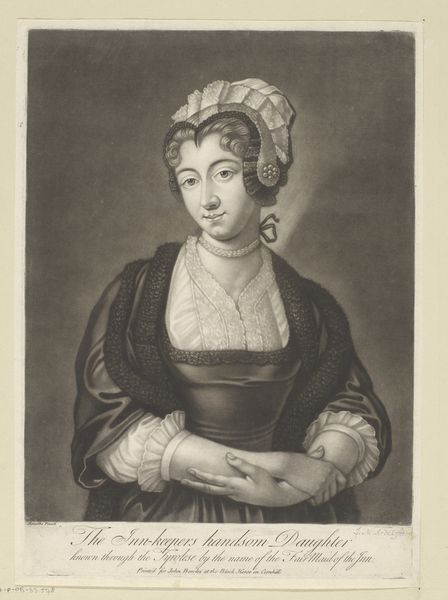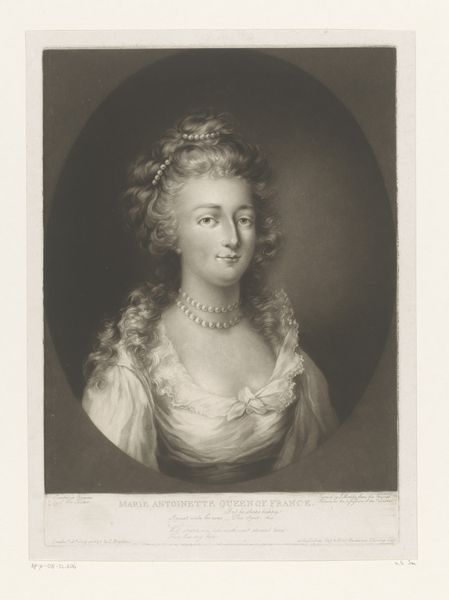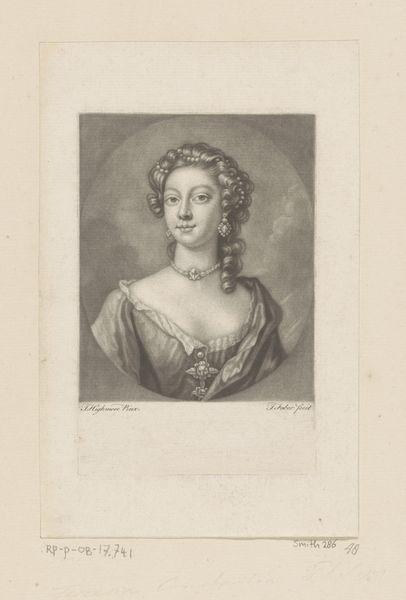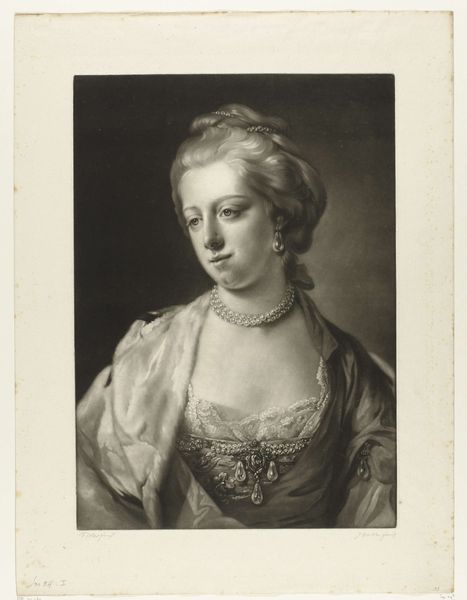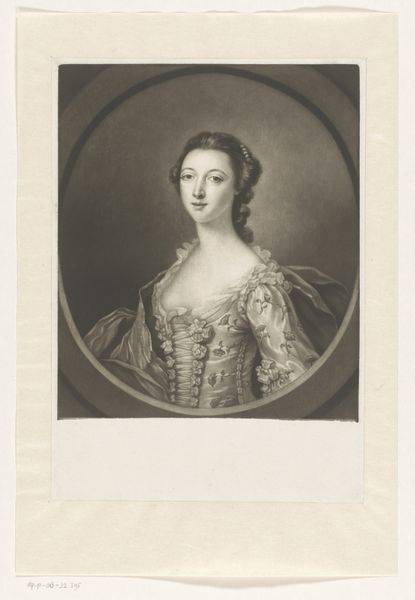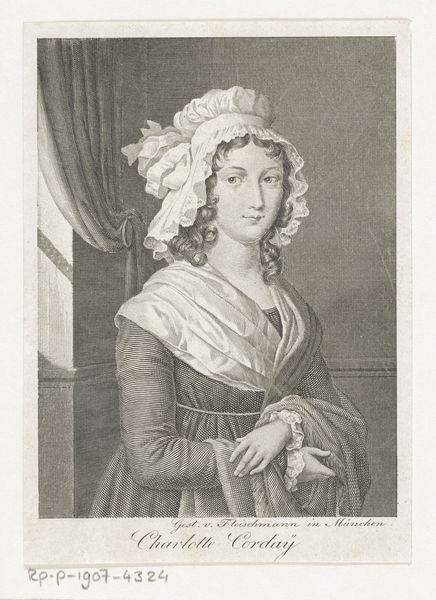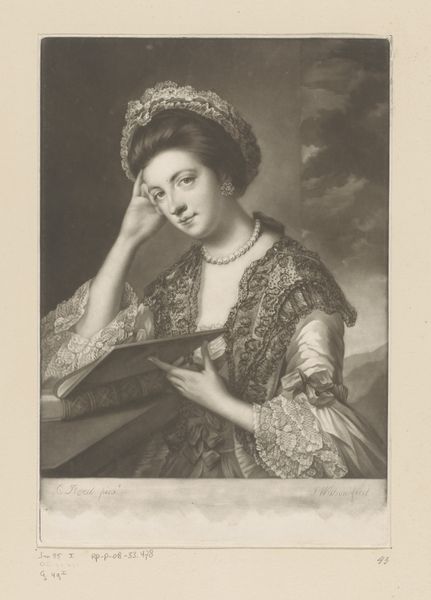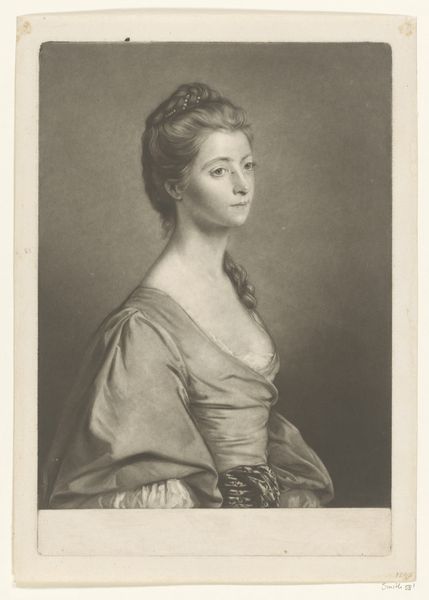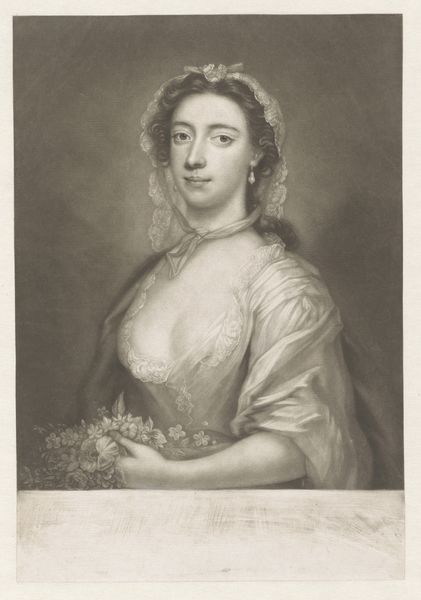
print, paper, engraving
#
portrait
# print
#
paper
#
engraving
#
rococo
Dimensions: height 504 mm, width 354 mm
Copyright: Rijks Museum: Open Domain
Curator: Looking at this Rococo engraving from 1764, "Portret van Augusta Frederika van Hannover" by James McArdell, I am immediately struck by its somber tonality. For a royal portrait, it seems unexpectedly subdued, doesn't it? Editor: Absolutely. The way McArdell worked the paper to create such varying textures using the engraving medium, highlighting the opulence of the fur stole contrasted against what appears to be a modest lace trim… the materials themselves speak to class disparity. The production involved skill, time, and inherently, social structures. Curator: Precisely. Augusta Frederika, as a member of the British Royal Family through her marriage to Charles William Ferdinand, Duke of Brunswick-Wolfenbüttel, exists at an intersection of familial power and gendered expectation. Note how her gaze avoids direct eye contact. The diamond tiara screams wealth and status, but that subtle downward glance makes me question the constraints of her position. What did it mean to be a woman holding that power in the late 18th Century? Editor: Thinking about process, it’s incredible to consider the engraver's meticulous labor – line by line – translated into thousands of prints, circulating her image across vast networks. It transformed Augusta Frederika’s likeness into a commodity. Reproducing her, making her a possession for a burgeoning middle class interested in courtly life and, more significantly, status. The paper itself becomes a carrier of not just artistry, but socio-economic meaning. Curator: That reproductive potential is key. Images like this reinforce a particular notion of beauty and nobility tied to dynastic inheritance. Think of how it informs our contemporary understandings of femininity in positions of power; from celebrities to female politicians, the shadow of these expectations endures, demanding their own kinds of conformity. Editor: Yet, to consider just paper itself: It’s not inherently precious but through manipulation it conveys a sort of power. The accessibility to that is important when discussing consumer culture. McArdell's choices become less about flattery or accuracy, and more about what the image does within the material conditions of the time. Curator: Indeed. I now see past that initial impression to note something almost revolutionary in her muted portrayal and how it still echoes in present societal expectations. Editor: Agreed. By highlighting material conditions and focusing on social influence it’s amazing how history comes alive to question even something seemingly quiet such as this.
Comments
No comments
Be the first to comment and join the conversation on the ultimate creative platform.
